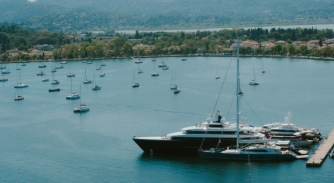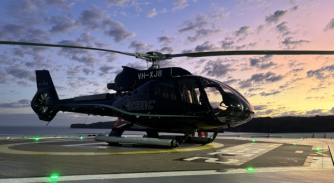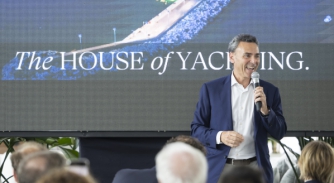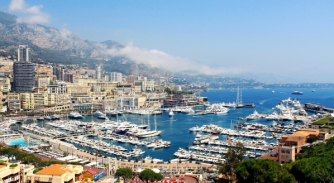The luxury of convenience: eVTOLs
Law firm Reed Smith takes an in-depth look at the practical considerations of the use of electric vertical take-off and landing aircraft on yachts…
Philip Rymer and Rohan Soni, transportation lawyers at global law firm Reed Smith, delve into the regulatory, safety, insurance and operational challenges that must be addressed.

The superyacht industry has long prioritised luxury, convenience and privacy, adopting cutting-edge transportation solutions. Now, the rise of electric vertical take-off and landing aircraft (eVTOLs) presents a new synergy across transportation classes. These fully electric aircraft require no runway and are poised to revolutionise yacht access.
Safety
eVTOLs could enhance accessibility, transporting owners and guests from urban centres, remote locations or shorelines to an anchored or moving yacht. At present, such use of eVTOLs will require further regulatory developments as no country has yet certified an eVTOL for the carriage of passengers for hire. However, it could soon be very much a parallel with the use of a helicopter to land on a yacht’s helipad. In fact, the total weight of a helicopter is typically between 1,000 and 4,500kg plus crew, passengers, fuel and luggage, whereas an eVTOL could weigh around 500-900kg (plus a 250-300kg payload for passengers and luggage).
The first iteration of eVTOLs will be piloted aircraft. eVTOLs will also have in-flight sensors and advanced software which can detect and avoid obstacles, including other aircraft, enhancing their safety by augmenting the pilot’s ability to visually detect objects. These capabilities make them safer to operate in urban environments or busier areas such as ports. The long-term goal would be for eVTOLs to become remote piloted or fully autonomous, but in order to achieve that, various licensing and international regulatory and safety laws and regulations would need to be enacted.
Regulation
Global aviation authorities have already begun considering safety regulations for eVTOLs. In the US, the FAA will authorise most eVTOLs using Part 21.17 of the FAA Code, which outlines regulations for “special classes” of aircraft. In Europe, EASA will classify eVTOLs under new regulations (named SC-VTOL), which will use the building blocks of existing regulations that are applicable to aircraft and airworthiness standards. For operations which are piloted, there will also be a discussion as to whether eVTOLs fall within the jurisdiction of air traffic control regulators when over international waters (in the same way commercial aircraft are ‘handed off’ to the next set of air traffic control when they reach certain ‘borders’ during international flight).
The concept of eVTOL insurance is in its infancy, but the market will develop as R&D, testing and licensing of eVTOLs to be used in the mass market progresses, and as more insurers become comfortable with the risk level of piloted eVTOLs.
The current regulations require that a helipad on board a commercial yacht is certified to be able to receive charter guests, whereas the requirements on private yachts are less stringent. The aspect which is less clear is whether there will be additional safety requirements or registration criteria imposed by the Flag state of the vessel and/or classification society. It is perhaps too early to speculate on whether these entities have begun considering eVTOL regulation, but they will undoubtedly have an impact on both yachts and commercial ships in the years to come, as eVTOLs become a viable transportation option.
Insurance and risk
There are two main aspects of insurance which will need to be considered with use of an eVTOL on yachts: (i) will the eVTOLs’ insurances be affected by over-water flying and/or landing on a yacht (noting that placing eVTOL insurance is currently very difficult, if not impossible due to unquantifiable risk); and (ii) will hull and machinery insurances for the yacht be impacted by having an eVTOL on board, and will it be considered by insurers/brokers any different from the risk of a helicopter?
The concept of eVTOL insurance is in its infancy, but the market will develop as R&D, testing and licensing of eVTOLs to be used in the mass market progresses, and as more insurers become comfortable with the risk level of piloted eVTOLs – which will of course be reassessed in the future when eVTOLs become fully autonomous.
Yacht operations
There are certain efficiencies which can be created by having an eVTOL on board: not only can it carry owners and charter guests to and from the yacht quicker than current land transport or tendering arrangements, but it can also enable them to reach the yacht in more remote locations. Charter yachts also often have a high turnover of guests on board, so perhaps having a permanent eVTOL on board will become an ancillary service that charter yachts can provide over tendering.
These aircraft could also streamline supply deliveries of provisions and fuel, medical evacuations and emergency response. With faster shore-to-yacht transfers, they might reduce the need for tender storage, freeing up square-footage for leisure spaces or guest accommodations.
Storage
Those yachts which are already designed to have an existing helipad will likely be able to accommodate an eVTOL and experts suggest the clearances currently required for helicopters will be narrower with eVTOLs. For instance, helicopters average 12m in length and 10m in width, whereas some eVTOLs measure 6m by 11m, with some concepts having foldable rotors further reducing space requirements. For storage purposes, existing garages (for tenders and water toys) could be used to house eVTOLs, which may entirely eliminate the need to house tender boats for guest transportation and supply delivery.
The use of eVTOLs is a promising development that has the potential to revolutionise the way yacht owners and charterers travel to and from their vessels.
Yacht builders, engineers and naval architects will have to reconsider yacht physics to accommodate eVTOLs and sailing with one on board; however, the positive weight saving (as against a helicopter) should help. In theory, it should be plausible to sail with an eVTOL on deck probably strapped down to prevent movement, and it could be light enough to crane into a storage garage. Additional safety and mechanical considerations, such as the impact of wind and current against an eVTOL on deck, as well as the stability and temperature range the eVTOL batteries would need, have to be considered. Recharging times for some prototypes may be as short as one hour, but power supply capacity on yachts must be evaluated to support on-board charging needs.
Management and crew
Management companies employed to assist yacht operations will need to train crew on eVTOL use, including how to store and charge them. In the future, it may be possible that a permanent pilot would form part of the yacht crew, to assist with bringing guests on board, for provisioning, for recreation such as aerial tours of the scenery where the yacht is anchored and for emergency evacuation purposes.
The commercial managers may also be asked to consider any tax or VAT issues which may arise from use and transportation of an eVTOL between jurisdictions.
Partnerships
We have seen some initial examples of collaboration across the yachting and aviation industries where products are cross-sold to the same high-net worth target market. For example, UK aerospace company VRCO, which is developing a four-person eVTOL, has signed a partnership agreement with solar catamaran builder Silent Yachts to cross-sell its XP4 eVTOL to owners of the 37-metre Silent 120. As eVTOL prototypes develop, we will no doubt see more companies taking advantage of the synergies across different luxury transportation sectors.
The use of eVTOLs is a promising development that has the potential to revolutionise the way yacht owners and charterers travel to and from their vessels. Pilot and yacht crew training and development of eVTOL regulation should allow for integration into existing aviation and maritime regulations.
If development continues at its current pace, eVTOLs are the future of aviation transportation, and costs of superyacht ownership mean owners are a significant target market for eVTOLs. With proper safety measures and infrastructure, eVTOLs offer a glimpse into the future of luxury transportation, further integrating air and sea travel in unprecedented ways.
NEW: Sign up for SuperyachtNewsweek!
Get the latest weekly news, in-depth reports, intelligence, and strategic insights, delivered directly from The Superyacht Group's editors and market analysts.
Stay at the forefront of the superyacht industry with SuperyachtNewsweek
Click here to become part of The Superyacht Group community, and join us in our mission to make this industry accessible to all, and prosperous for the long-term. We are offering access to the superyacht industry’s most comprehensive and longstanding archive of business-critical information, as well as a comprehensive, real-time superyacht fleet database, for just £10 per month, because we are One Industry with One Mission. Sign up here.
Related news

Why the yacht survey report is essential reading
Richard Franklin, managing partner of Yacht Survey Partners, explains the importance of engaging with your surveyor before purchase
Owner

A guide to yacht-based helicopter operations
An opinion piece on why a helicopter must be managed as an independent aviation programme while being fully integrated into the yacht’s overall operations
Opinion

Addressing the legal landscape
Benetti and guest lawyers take a deep dive into the legal issues influencing the yachting world
Business

How to make a fair presentation of risk
Hill Dickinson’s Francesca Conn and David Reardon dissect the Delos v Allianz case and explain what this means for superyacht insurance
Business

What does “choice-of-forum” mean for yacht insurance?
A recent US Supreme Court ruling on marine insurance policies has flagged numerous new legal considerations for American yacht owners
Owner
Related news
Why the yacht survey report is essential reading
6 months ago
A guide to yacht-based helicopter operations
6 months ago
Addressing the legal landscape
10 months ago
How to make a fair presentation of risk
11 months ago
What does “choice-of-forum” mean for yacht insurance?
11 months ago
NEW: Sign up for
SuperyachtNewsweek!
Get the latest weekly news, in-depth reports, intelligence, and strategic insights, delivered directly from The Superyacht Group's editors and market analysts.
Stay at the forefront of the superyacht industry with SuperyachtNewsweek



